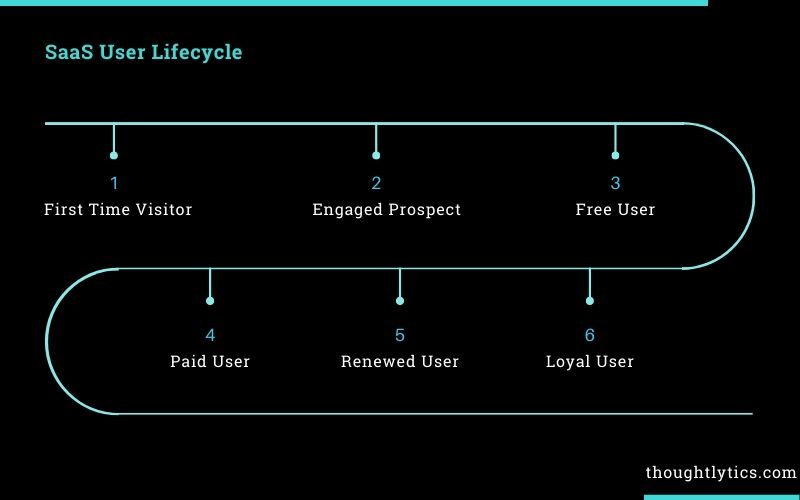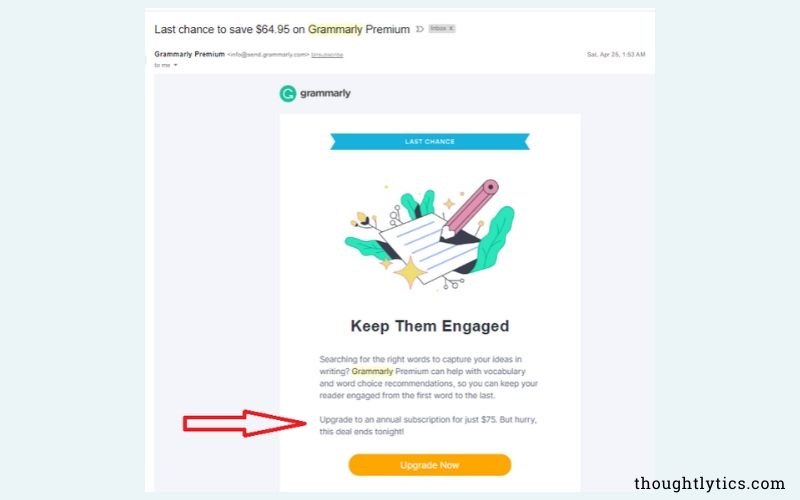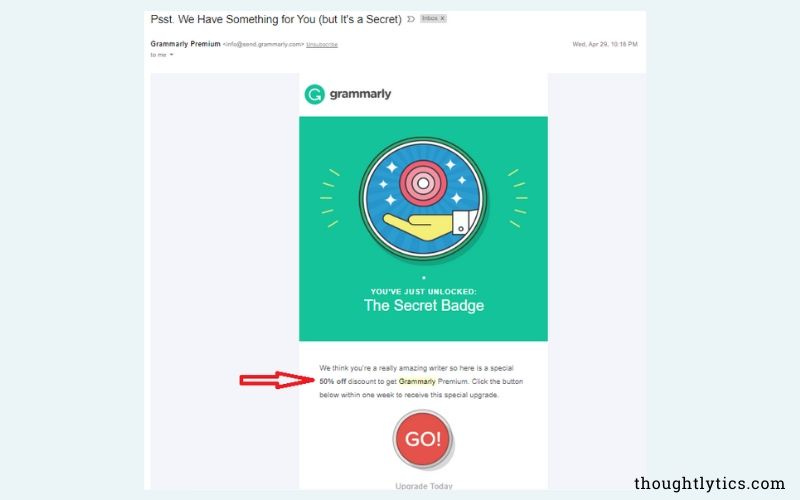 |
If you are in the SaaS business, chances are you hear the following terms every day:
low traffic, low conversions, fewer users, high support tickets, low NPS, and high churn (or low retention).
You are not alone; these are real business problems.
They hurt your growth machine and bring down profitability.
For example, this SaaS benchmarking report says that if the retention rate is less than 90%, your business is likely a slow-growth business.
These problems may look independent of each other, but they have a single root cause.
Without solving the root cause, a solution to any one of these problems may cause another problem.
Going after the root cause will bring synergy in your actions and solve all the problems for good.
That root cause is ‘low engagement.’ 💡
User engagement affects everything
Low traffic: People don’t click on your article links because the headline does not engage them.
Low conversion: Blog readers do not signup because the content does not engage them. Visitors do not convert because the landing page copy does not engage them.
High support tickets: The product, the help docs, and the community do not engage active users. Customers can’t stop raising support tickets, and you spend more on hiring support people.
Low NPS: Customer satisfaction is low because the support team does not engage them.
High churn: Without enough engagement, users feel no one is hearing them and leave.
✔️ When you engage your customers, they understand and accept your limitations. They keep using the product even if it lacks critical features.
For example, I code quite a lot in Python and use PythonAnywhere for hosting. They do not support asynchronous tasks, but their support team is a rockstar, always ready to help. For this reason, I continue to use it with a high satisfaction level.
One thing I have learned from my interactions with the PythonAnywhere team is that you have to build user satisfaction within the DNA of your business.
Your product, design, growth, support, and sales processes should have a high user engagement as a critical metric.
And to make it work, you have to systematize the user engagement.
For only systems scale.
End-to-end ecosystem
If you have a terrible experience with a business — either the product or service was bad, or an employee misbehaved, or you had to wait in line for long, your mental imagery of that entire business turns negative.
The same is the case with your customers too.
Customers usually do not differentiate between various functions of a business. For them, experience with the company as a whole matter.
Therefore you can not limit yourself to improving a few things. You should build an end-to-end experience for your customers — a complete ecosystem.
Your ecosystem should engage everyone:
Website visitors
Blog readers
Cold email prospects
Free trial users
Paid users
Churned users
Specifically, you need a clear engagement strategy at each stage of a user’s lifecycle.
 |
For each stage, ask yourself, “how can I delightfully engage the audience more and more?”
Delightfully.
Because some engagements are irritating. 💡
I once raised a ticket from my Zoom account. Zoom’s support team resolve the issue in two days but kept sending me emails after emails for almost a month asking for feedback.
I think I still receive those emails.
To build an end-to-end engagement system, you should think about your business as a machine — one giant machine with various moving parts. Every part should function properly.
Here is an example:
You create an interesting blog post and share it on social media platforms.
Visitors to your blog post find it exciting and spend a couple of minutes on your website.
You prominently display newsletter signup (and not hide it in a dark footer) or free ebook download. Some of the readers find these free resources interesting and opt-in.
The rest of the readers were busy doing their work and after reading your blog, went back to their work again without subscribing to the newsletter. Like I discussed in #issue10, you have Facebook pixel and Ad roll setup, so your machine can find, target, and follow these readers everywhere on the internet if you chose to invest in retargeting Facebook ads.
Over the next couple of days, you get some of these readers to signup for a free trial — either via newsletter channel or retargeting ads channel.
Right after signup, you send a series of emails educating the user about the product, features, use cases, success stories, and more.
These emails also informed newly active users about your social media accounts and Facebook group for users. Some of them followed you on various social media accounts, and some joined the Facebook group.
At the end of the trial period, some users will upgrade to the paid plan by themselves.
You monitored the user session logs and categorized the dropped out users based on their engagement levels.
You offered a small discount to those users who were highly engaged with your product but did not upgrade.
To those who didn’t use the product much, you offered an extension of the free trial period for two weeks. You are not sure why they didn’t use it and want to give them another chance to engage with the product.
You keep monitoring the paid users and watch out for the churned ones.
In your Facebook group, you engage users by sharing product updates and success stories. You are also attentive to their queries and offer solutions promptly.
Since businesses with faces connect with the audience a lot better, you as a founder is active on social media and an evangelist of your winning theme.
To every user that does not renew the subscription at the end of the period, you offer a discount if they signup for a higher plan.
Did you see the blueprint of an end-to-end engagement ecosystem in this example?
I hope you did.
✔️ Such a system makes you omnipresent.
It enables you to engage your users quickly.
However, some engagements are more profitable than others.
This brings us to another crucial point.
In the game of chess, an advanced pawn is valuable second only to the queen.
Engagement Life Cycle
Engaging a first-time visitor for newsletter opt-in is very different from engaging a paid user for renewal.
To convert a first-time prospect into a trial user, you might have to create a bottom-of-the-funnel blog post, a smooth migration feature, and a ‘no credit card required’ signup process.
But you can convert a free trial user to a paid user by offering a 30% discount at the end of the trial period.
As the user progress on the ‘user lifecycle,’ her trust in the business builds up, making it easy for you to engage and convert her into a paying user.
The cost to engage a prospect is inversely proportional to the level of her engagement with your ecosystem.
Users who have signed up for your email list, have used your free trial and watched your webinar are far more valuable than the ones who have just landed on your website today.
This means to get the highest ROI, you should allocate more resources in converting more engaged users. 💡
If you spend $1 to bring a new visitor to your website, then you can probably spend $30 to convert a paying user from a monthly plan to an annual plan.
Breaking up the CAC
You can divide the cost to acquire a customer into multiple parts and spend it progressively. Start small, and as the user’s engagement with your ecosystem increases, spend more on converting her.
For example, here is a strategy:
Write a top-of-the-funnel blog post: A content piece that is sure to interest your target audience. For example, if early-stage startups are your target audience, then write something like “8 pitch decks that helped so and so to raise millions”. Such a blog post is a long term asset and will bring traffic to your website for years to come, effectively bringing down per visitor Cost. You can strategically share the link to this blog post in communities to bring traffic. [Cost = Low]
Small commitment CTA: Place CTAs like “download a free ebook” or “get a seven days free course on being a better leader” along with this blog post and capture emails. These are small commitments for a reader and give you entry into her inbox. Most of the readers of this blog post would not be ready to signup, and if you do not provide a ‘small commitment CTA,’ they will read the post and leave, wasting all your efforts. [Cost = $0]
Free resource: Invest in building an excellent free resource. Whether it is a free ebook or a drip sequence, make it useful for the readers. At this stage, the visitor has turned into a prospect, and her engagement level has gone up. She is now open to learning about your product. [Cost = One-time Cost of building the free resource]
Free Signup: Some visitors will signup for the free plan by themselves while others need to be engaged. [No extra cost]
Paid Plan: If a free plan user leaves the product at the end of the free trial or continue using the free plan, you should analyze her usage log. If she is using the product but not upgrading to a paid plan for cost reasons, go ahead and offer her a discount. [cost = high if you provide a discount]
If you follow such a process, you will rely on organic methods to bring a user to your ecosystem and engage her with your product. You will use the biggest part of the acquisition cost only when the user is fully engaged, thus maximizing your ROI.
In the curiosity framework, I had discussed the Grammarly’s strategy to entice and convert free users to paying ones. Remember, I upgraded to the paid plan based on the product features. Grammarly didn’t spend anything on this conversion.
I enjoyed using Grammarly but didn’t renew the subscription at the end of the first month. I wanted to see their engagement strategy for churned users. 🤫
Nothing happened for four days, but on the fifth day, I received an email from Grammarly offering me a discount of $64.95 on an annual subscription.
A 46% discount on the annual subscription of $139.95.
 |
This offer was valid only for 24 hours. I didn’t check my email for the whole day and missed the offer.
I opened this email two days later, clicked on the link, but the offer had expired by then.
I want to assume here that Grammarly logged this event in its data system. 💡
Because two days later, they sent me another email. This time, offering me a 50% discount on the annual subscription.
And keeping the offer valid for a week!
 |
As you must have guessed, I have subscribed to their annual plan. ✌️
Here are the key takeaways from this:
Grammarly didn’t spend much (except building content) to acquire me as a free user.
They built a reliable product feature to convert free users to paying ones. To create this feature, they must have invested in research, design, and development. In SaaS, these are kind of Capex (capital expenditures) and lead to long term value creation.
They spent $70 to reactivate me only after I have proved to be a highly engaged and paying user for a month.
The offer was for an annual plan. There was no offer for a monthly subscription. By offering a significant discount on a higher plan, they have improved the probability of the user accepting the offer, reduced their monthly churn, and increased their gross sales.
They kept the offer time-bound, at first limited only to a day and later for a week. Only time-bound offers get acted upon.
The Attribution Maze & Alpha Engagement
Ever wonder what made a new user register? What are her emotional triggers, and how to engage her further?
For a registered user, you can analyze session logs, send surveys, and track her support tickets to create a customized engagement.
However, before registration, there is a limit to which you can customize the engagement.
One good way that I have come across is to use the lead-conversion attribution model.
Here is what exactly you should do:
Include a unique identifier in the opt-in form in every blog post so that you know from which blog post a user has opted in. It is pretty easy to do in Mailchimp. Other services should have a similar feature too.
Whenever a visitor opts in for your mailing list, you will know which blog post she was reading.
Build different variations of the free resources i.e., free ebook or drip sequence. You need to create only a little difference among variations just to make it contextually relevant for the subscribers.
Send the free resource mapped to the blog post from where the user has opted-in.
💡 This will lead to Alpha Engagement:
Subscribers will feel that you understand them and will be drawn to you.
You will gain deeper insights into your audience’s likes and dislikes.
That’s all I wanted to discuss today on building an Omni-Engagement Ecosystem.
Which one of these strategies are you going to implement for your business?
Hit reply and let me know.
❤️ Thanks for reading Issue #14. I’d truly appreciate it if you hit that heart button & share this with other SaaS people you know that will find it useful.
We’ll talk soon.
Until then,
Ankur
Founder, Thoughtlytics
PS - Are these emails provoking questions or reactions? Hit Reply and let me know what’s on your mind. Don't be shy! ❤️
If you liked this, please forward it to a friend! It would mean a lot to me. Or send them to the Organic SaaS Growth newsletter.
Were you forwarded this email? You can subscribe to the newsletter or explore the past editions.
For tweets: @Thoughtlytics
SaaS growth models - Instagram

